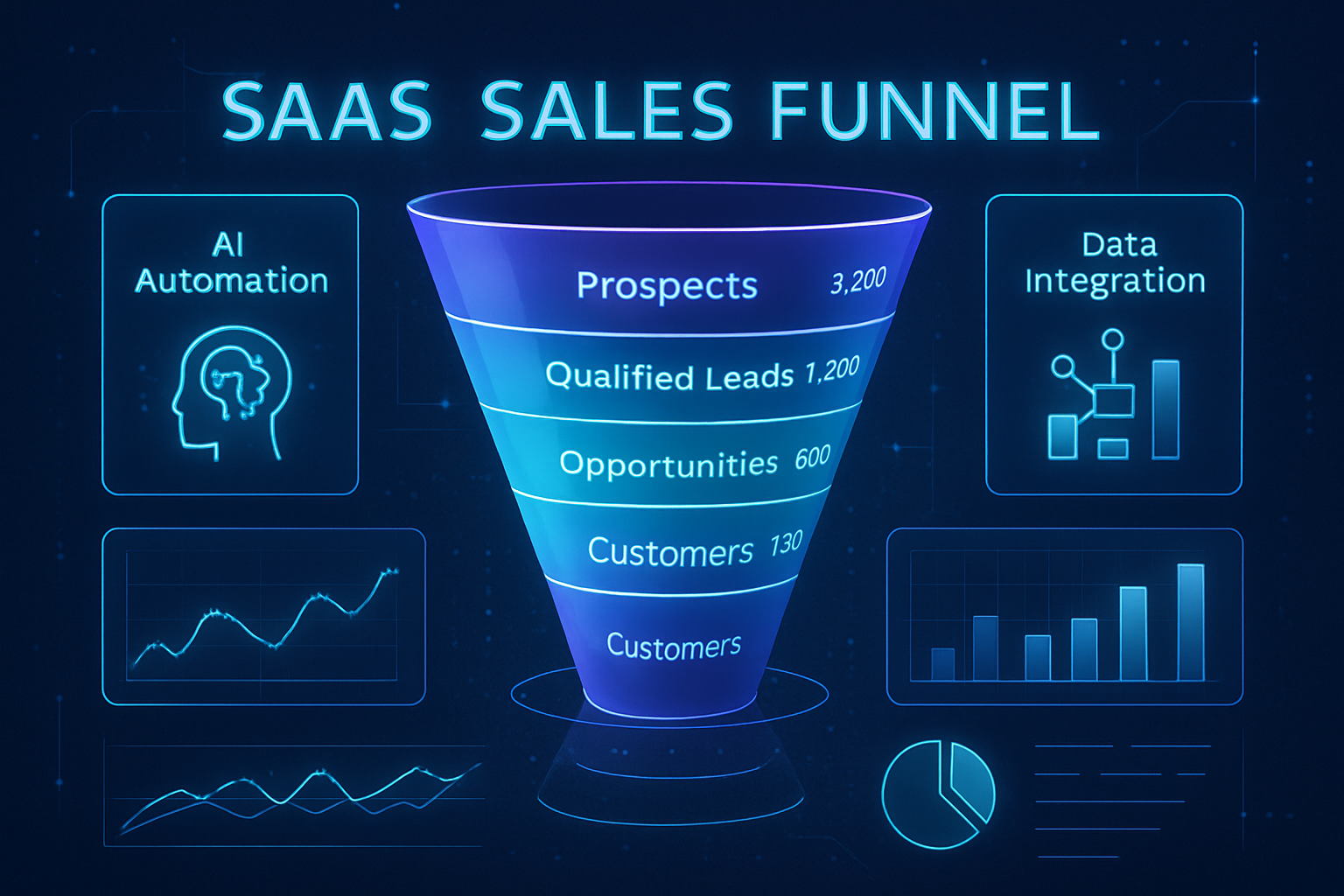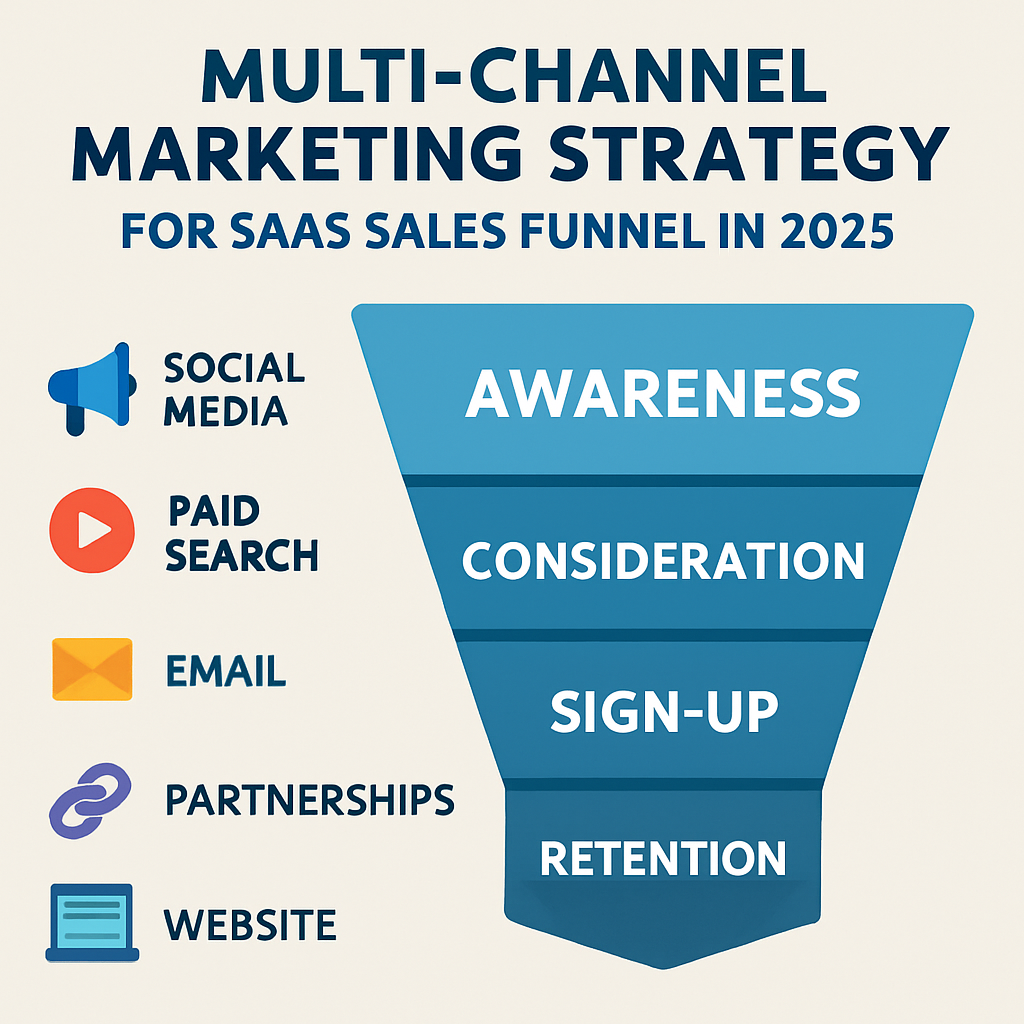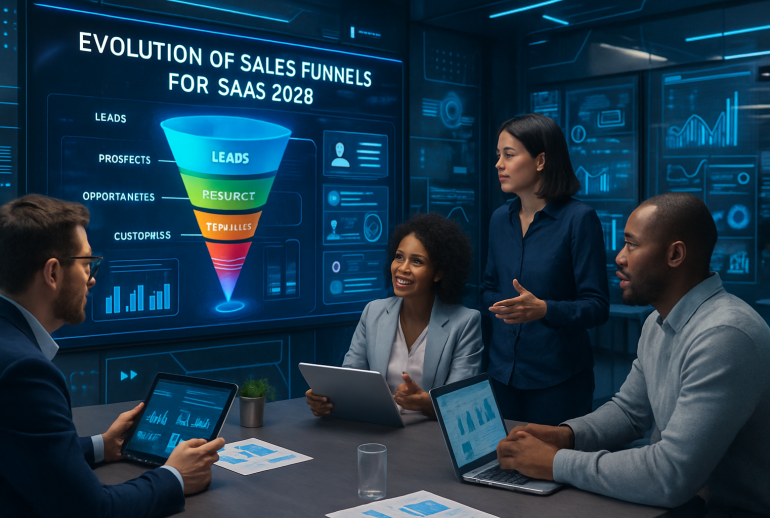The year 2025 marks a pivotal moment in the realm of SaaS sales funnels, where innovation, technology, and strategic alignment converge to redefine how companies approach customer acquisition and retention. Gone are the days of linear, segmented sales processes; modern funnels are now dynamic ecosystems powered by AI, enriched by data-driven insights, and personalized at every touchpoint. The disruptions introduced by artificial intelligence from the early 2020s continue to deepen, transforming traditional roles and revamping the customer journey in ways unimaginable just a few years ago.
Sales organizations have shifted from relying heavily on specialized roles like Sales Development Representatives (SDRs) and traditional Account Executives (AEs) to hybrid functions where AI intelligence and automation shoulder much of the heavy lifting. Companies such as Postal, who exemplify this transformation, have achieved staggering growth by integrating AI outreach agents while optimizing human roles for inbound lead filtering and deal closures. These advancements have forced a rethink of Go-To-Market (GTM) strategies, pushing for greater alignment between marketing, sales, and customer success teams to offer unified and seamless customer experiences.
With channel fragmentation, rising Customer Acquisition Costs (CAC), and increasingly discerning buyers, SaaS leaders are challenged not only to capture attention quickly but also to nurture relationships deeply and intelligently. From embracing product-led growth models for startup scalability to deploying sophisticated Account-Based Marketing (ABM) campaigns targeting enterprise prospects, the funnel’s anatomy has morphed into a versatile, interconnected process.
Moreover, the integration of platforms such as HubSpot, Salesforce, ClickFunnels, and Pipedrive with AI-powered tools like Drift, Intercom, and ActiveCampaign has enabled personalization and automation at scale without sacrificing authenticity. Meanwhile, innovations in post-sales technologies like Zendesk-driven AI support promise higher customer retention and increased lifetime value by detecting churn risks and automating timely engagement.
As 2025 progresses, the evolution of SaaS sales funnels epitomizes a holistic approach—one that blends cutting-edge technology, human creativity, and data orchestration to not only attract customers efficiently but keep them engaged and loyal over the long haul.
Transforming SaaS Sales Funnels with AI-Driven Automation and Data Integration
The influence of AI in reshaping SaaS sales funnels cannot be overstated. Pre-2023, sales teams followed a straightforward sequence: SDRs sourced leads, AEs handled deal negotiation and close, and post-sales teams managed retention. Today, much of this workflow has been overtaken by AI-driven systems, fundamentally altering the team composition and operational focus within SaaS companies.
Postal serves as an illuminating example: despite 5,000%+ revenue growth over the past three years, they operate with just one human SDR who primarily filters inbound leads generated by AI outreach agents. Their three full-time Account Executives then manage customer relationships until closure. This shift reflects a broader trend where AI handles up to 80-90% of sales funnel chores such as personalized messaging, tier-one post-sales support, and initial sourcing, freeing human teams to focus on higher-value activities.
Implementing this level of automation, however, demands careful tech stack selection and methodical integration. Postal’s experience connecting Clay (an AI outreach platform), 6Sense (pipeline intelligence), and Cognism (B2B contact data) through their enterprise OpenAI framework exemplifies the complexity and the payoff of patiently fine-tuned AI adoption. This blend enables “purposeful” lead targeting with precise “Why You” and “Why Now” communication, improving qualification and conversion rates.
- Key benefits of AI integration in SaaS sales funnels:
- Automated lead sourcing and qualification at scale
- Enhanced messaging with tone and context optimization
- Efficient post-sales tier-one customer support automation
- Streamlined lead nurturing with data-driven insights
- Automated lead sourcing and qualification at scale
- Enhanced messaging with tone and context optimization
- Efficient post-sales tier-one customer support automation
- Streamlined lead nurturing with data-driven insights
Beyond automation, legacy CRM and funnel platforms like HubSpot, Salesforce, and Pipedrive have adapted to incorporate AI modules, facilitating seamless data sharing and unifying sales and marketing efforts. This integrated ecosystem is crucial for real-time pipeline visibility and aligning teams on shared KPIs such as Customer Lifetime Value (CLV) and Lead-to-Customer Conversion Rates.
| Component | Functionality | Representative Tools | Benefits |
|---|---|---|---|
| Lead Generation & Qualification | Automated sourcing and AI-driven lead scoring | Clay, 6Sense, Cognism, HubSpot | Higher targeting accuracy; saves human SDR time |
| CRM & Pipeline Management | Unified data tracking and forecasting | Salesforce, Pipedrive, HubSpot | Better cross-team alignment; improved forecast accuracy |
| Personalized Messaging | Optimized outreach tone and timing | Drift, ActiveCampaign, Intercom | Improved engagement and conversion rates |
| Post-Sales Support | AI-powered tier-one customer service | Zendesk, AI support bots | Enhanced retention; proactive churn prevention |
This comprehensive AI-enhanced funnel architecture is the backbone of modern SaaS sales success, proving that careful orchestration of technology and human effort accelerates growth while reducing operational friction.

Optimizing Sales Roles and GTM Strategies for 2025 SaaS Funnel Excellence
The traditional sales team structure has been deconstructed and rebuilt in 2025. Instead of rigid roles—cold-calling SDRs, specialized AEs, and siloed success teams—companies now redefine talent utilization to match AI-supported workflows.
For example, the once vibrant SDR role is reimagined predominantly as an inbound lead vetter supervising AI-generated prospects, while AEs gradually evolve into full-cycle sellers handling everything from brief nurturing to deal closure. This shift stems from the need to enhance efficiency, foster deeper customer engagement, and accelerate revenue velocity.
Patricia DuChene, CRO at Postal, emphasizes a flexible learning progression for Account Executives starting with smaller accounts, maturing their communication and business acumen over time before tackling complex enterprise sales. This approach allows companies to cultivate versatile “full-funnel” AEs rather than relying on segmented specialists.
- Best practices to align sales roles with AI-enhanced funnels:
- Leverage AI SDRs for lead generation and preliminary qualification.
- Utilize human SDRs as critical gatekeepers of inbound leads to maintain quality.
- Employ full-cycle AEs capable of managing the sales process end-to-end.
- Develop gradual skill-building paths for AEs passing from SMB to enterprise deals.
- Identify sales personas suited for your company stage (missionary vs. mercenary).
- Leverage AI SDRs for lead generation and preliminary qualification.
- Utilize human SDRs as critical gatekeepers of inbound leads to maintain quality.
- Employ full-cycle AEs capable of managing the sales process end-to-end.
- Develop gradual skill-building paths for AEs passing from SMB to enterprise deals.
- Identify sales personas suited for your company stage (missionary vs. mercenary).
When startups attempt product-market fit (PMF), they often find missionary salespeople—those passionate about the problem and product—more effective than mercenary hunters motivated purely by commission. Startups build foundations with swiss army knife-style reps who adapt quickly and provide valuable feedback, before recruiting driven sales leaders focused on scale and GTM execution.
This talent-centered GTM strategy works hand-in-hand with powerful sales and marketing platforms. Utilizing ClickFunnels and LeadPages for tailored landing experiences, aligned with integrated CRM tools like HubSpot or Salesforce, fuels data-driven sales motions and faster decision-making.
| Sales Role | Focus Area | Tools to Enhance | Outcome |
|---|---|---|---|
| AI SDR | Outbound prospecting and lead generation | Clay, Cognism, 6Sense | Scalable sourcing and qualification at low cost |
| Human SDR | Filtering and qualifying inbound leads | Pipedrive, HubSpot | Maintains lead quality and prioritization |
| Full-cycle AE | Lead nurturing to close and upsell | Salesforce, ActiveCampaign, Drift | Increased deal velocity and relationship depth |
| Sales Leader | Coaching and GTM strategy supervision | Marketo, HubSpot analytics | Aligned team execution and goal attainment |
Sales organizations must be deliberate in matching roles to company goals and technology capabilities to maintain agility and ensure optimal funnel performance. This evolving framework is essential to navigating the complexities of 2025 SaaS markets.
Unified Go-To-Market Strategies and Cross-Functional Collaboration Driving SaaS Funnel Success
In 2025, SaaS businesses that separate their departments risk internal friction and lost opportunities. An integrated Go-To-Market (GTM) strategy that aligns sales, marketing, and customer success is fundamental to building frictionless experiences that facilitate conversions and nurture loyalty simultaneously.
Cross-functional collaboration ensures consistent brand messaging and smoother handoffs across the funnel. This cohesion helps eliminate the age-old problem of information silos which historically slowed down pipeline velocity and distorted customer communication.
- Steps to foster GTM alignment:
- Implement shared KPIs accessible across departments via CRM systems like Salesforce and HubSpot.
- Schedule regular interdepartmental syncs to review pipeline health and campaign effectiveness.
- Use data-driven dashboards to provide real-time transparency into funnel metrics such as CAC and CLV.
- Coordinate marketing campaigns via platforms like Marketo to support sales outreach efforts seamlessly.
- Leverage customer feedback loops to refine messaging and product perception continually (Learn more about customer feedback integration).
- Implement shared KPIs accessible across departments via CRM systems like Salesforce and HubSpot.
- Schedule regular interdepartmental syncs to review pipeline health and campaign effectiveness.
- Use data-driven dashboards to provide real-time transparency into funnel metrics such as CAC and CLV.
- Coordinate marketing campaigns via platforms like Marketo to support sales outreach efforts seamlessly.
- Leverage customer feedback loops to refine messaging and product perception continually (Learn more about customer feedback integration).
Account-Based Marketing (ABM) exemplifies this harmony by closely tying marketing resources to sales targets, enabling teams to craft hyper-personalized campaigns for VIP accounts. When marketing leverages input from sales to tailor ads and content aligning pain points with your product’s unique advantages, the conversion likelihood for high-value deals rises substantially.
| Alignment Factor | Benefit | Technology Enabled |
|---|---|---|
| Shared CRM Platform | Consolidated data and pipeline visibility | HubSpot, Salesforce, Pipedrive |
| Coordinated Campaigns | Consistent messaging and lead nurturing | Marketo, Drift, ActiveCampaign |
| Cross-Department Meetings | Faster issue resolution and ideation | Internal collaboration tools + video conferencing |
| Customer Feedback Integration | Product and messaging refinement | Zendesk, Intercom (More on customer engagement) |
Such interconnectedness boosts key performance metrics including lead-to-customer conversion and customer satisfaction scores. SaaS companies successfully embracing these principles foster a culture of shared responsibility, accelerating both acquisition and retention cycles.
Enhancing SaaS Funnel Efficiency Through Multi-Channel Marketing and Speedy Lead Qualification
Acquisition cost efficiency remains a top priority in 2025. As CAC climbs, precisely targeting high-intent buyers through multi-channel touchpoints ensures budget optimization while maintaining pipeline velocity. Speed in qualifying leads and responsiveness to buyer signals have become decisive competitive advantages.
The modern SaaS funnel demands intelligent allocation of resources towards channels like search engine optimization (SEO), paid media, email automation, social engagement, and webinar hosting—all harmonized to reinforce brand visibility and stimulate demand early.
- Strategies to improve funnel efficiency through marketing:
- Employ SEO best practices to capture inbound interest at the top of the funnel (Explore SaaS SEO strategies).
- Leverage personalized email sequences and retargeting using ActiveCampaign and Marketo.
- Test landing page variants with LeadPages and ClickFunnels to maximize conversion rates (Effective landing pages for SaaS).
- Use webinar series and industry thought leadership to nurture middle-of-funnel prospects (Utilizing webinars for sales success).
- Coalesce data from all touchpoints in CRMs like HubSpot and Salesforce for unified analysis.
- Employ SEO best practices to capture inbound interest at the top of the funnel (Explore SaaS SEO strategies).
- Leverage personalized email sequences and retargeting using ActiveCampaign and Marketo.
- Test landing page variants with LeadPages and ClickFunnels to maximize conversion rates (Effective landing pages for SaaS).
- Use webinar series and industry thought leadership to nurture middle-of-funnel prospects (Utilizing webinars for sales success).
- Coalesce data from all touchpoints in CRMs like HubSpot and Salesforce for unified analysis.
Rapid lead qualification is made possible by AI-empowered scoring models which prioritize prospects exhibiting purchase readiness cues. This enables sales to focus on high-value opportunities and avoid wasting cycles on low-intent leads. Close collaboration between sales and marketing further refines qualification criteria, shortening sales cycles significantly.
| Marketing Channel | Purpose | Technology Tools | Key Metric |
|---|---|---|---|
| SEO & Content Marketing | Drive organic top-of-funnel traffic | SEO platforms, Blogs, HubSpot CMS | Website Engagement Rate |
| Email Automation | Nurture leads with personalized messaging | ActiveCampaign, Marketo | Lead-to-Customer Conversion Rate |
| Paid Ads & Social | Retarget and amplify brand presence | Google Ads, LinkedIn Ads, Drift | Click-Through Rate (CTR) |
| Webinars & Thought Leadership | Build trust and educate prospects | Zoom, WebinarJam, HubSpot | Attendance and Engagement Rates |
This multi-channel, data-backed approach has become indispensable for SaaS companies seeking to outpace competitors and meet buyers where they spend time, thus maximizing the funnel’s overall performance and sustainability.

Prioritizing Customer Retention and PLG Approaches in Modern SaaS Sales Funnels
While acquisition grabs headlines, retention remains a powerful engine powering sustainable SaaS growth. By 2025, companies routinely allocate budget to post-sales functions enhanced by AI tools capable of identifying churn risks and automating personalized engagement to retain clients effectively.
Product-Led Growth (PLG) strategies also continue to gain traction, particularly for SaaS targeting SMB markets or siloed teams within larger organizations, where autonomous purchase decisions are common. PLG allows the funnel’s upper stages to partially bypass traditional sales efforts by leveraging product trials, freemiums, and direct user engagement to generate qualified leads.
- Core elements to maximize retention and PLG success:
- Implement AI-powered customer success platforms like Zendesk to provide tier-one support and identify accounts needing proactive outreach.
- Encourage customer advocacy programs supported by referral incentives which amplify word-of-mouth acquisition (Referral program insights).
- Monitor key retention metrics including Net Promoter Score (NPS) and Customer Retention Rates to guide continuous improvements.
- Use data from tools like Intercom for in-app messaging and real-time feedback collection (Discover customer feedback tactics).
- Invest in seamless onboarding experiences leveraging ClickFunnels and LeadPages optimized for flow and clarity (Mobile-friendly funnels enhance engagement).
- Implement AI-powered customer success platforms like Zendesk to provide tier-one support and identify accounts needing proactive outreach.
- Encourage customer advocacy programs supported by referral incentives which amplify word-of-mouth acquisition (Referral program insights).
- Monitor key retention metrics including Net Promoter Score (NPS) and Customer Retention Rates to guide continuous improvements.
- Use data from tools like Intercom for in-app messaging and real-time feedback collection (Discover customer feedback tactics).
- Invest in seamless onboarding experiences leveraging ClickFunnels and LeadPages optimized for flow and clarity (Mobile-friendly funnels enhance engagement).
Survival without a sales team is possible at early PLG stages; however, scaling to larger enterprises invariably requires building seasoned sales teams to navigate complex, multi-person buying committees. The blend of automated, product-centric growth backed by human-led enterprise sales rounds out a full-spectrum funnel capable of driving revenue growth sustainably.
| Stage | Focus | Tools & Platforms | Retention Metric |
|---|---|---|---|
| Onboarding & Activation | First product experience and user education | ClickFunnels, LeadPages, In-app guides | Activation Rate |
| Customer Support | Tier-one automated and live help | Zendesk, AI chatbots, Intercom | First Response Time, Resolution Rate |
| Advocacy & Referral | Leverage satisfied customers as promoters | Referral program software, CRM integration | Referral Volume, NPS |
| Expansion & Upsell | Identify growth opportunities in existing accounts | ActiveCampaign, Salesforce | Customer Lifetime Value (CLV) |
By treating retention as an integral component of the funnel rather than an afterthought, SaaS organizations lay strong foundations for long-term profitability and brand loyalty, critical factors that distinguish market leaders in today’s competitive landscape.
Frequently Asked Questions about SaaS Sales Funnel Evolution in 2025
- How has AI changed the structure of SaaS sales teams?
AI now handles much of the early funnel work such as lead sourcing, messaging tone optimization, and tier-one support. This reduces the need for large SDR teams and shifts human resources towards inbound lead qualification and full-cycle Account Executives, enabling more efficient and focused sales workflows.
- What role does cross-team collaboration play in modern SaaS sales funnels?
Aligning sales, marketing, and customer success teams creates a unified customer journey with consistent messaging and smoother handoffs. Sharing KPIs and CRM platforms like HubSpot or Salesforce ensures transparency and drives collective accountability for growth.
- Why is Product-Led Growth significant for SaaS startups in 2025?
PLG allows startups to acquire and activate users through product trials and freemiums without heavy early sales investment. This is ideal for SMB or small team markets with autonomous purchasing, delaying the need for formal sales hiring until scaling demands increase.
- How can SaaS companies optimize CAC with multi-channel marketing?
By analyzing channel effectiveness through multi-touch attribution and focusing spend on high-ROI channels such as SEO, email automation, and retargeting, companies reduce acquisition costs while maximizing lead conversion rates.
- What strategies improve customer retention within SaaS sales funnels?
Investing in AI-powered customer success platforms, fostering advocacy via referral programs, continuously collecting user feedback, and delivering seamless onboarding experiences are critical retention strategies that help extend customer lifetime and increase profitability.


